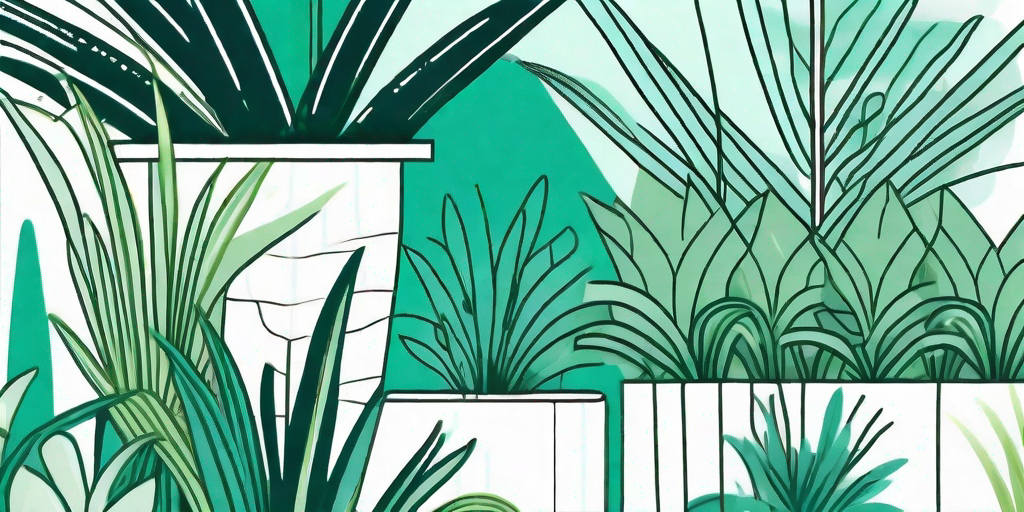
Monkey grass, also known as liriope, is a hardy perennial that can add a touch of wild beauty to any garden. This versatile plant, with its vibrant green leaves and charming purple flowers, is a favorite among gardeners for its low-maintenance needs and its ability to thrive in various conditions. But don't be fooled by its cute name; monkey grass is a tough little plant that can hold its own in the wild world of your garden. So, if you're ready to bring a bit of the jungle to your backyard, read on!
Understanding Monkey Grass
Before you start planting, it's important to understand what you're dealing with. Monkey grass is a type of evergreen perennial that is native to East Asia. It's known for its grass-like leaves and small, grape-like clusters of flowers that bloom in the late summer. Despite its exotic origins, monkey grass is surprisingly hardy and can adapt to a wide range of climates and soil conditions.
There are two main types of monkey grass: Liriope spicata, also known as creeping lilyturf, and Liriope muscari, also known as big blue lilyturf. The creeping variety spreads quickly and is great for covering large areas, while the big blue variety grows in clumps and is perfect for borders and accents. Both types are excellent choices for adding a touch of wild beauty to your garden.
How to Grow Monkey Grass
Now that you're familiar with monkey grass, it's time to get your hands dirty. But don't worry, growing monkey grass is as easy as pie. Or, well, as easy as growing a plant can be.
First, you'll need to choose a spot for your monkey grass. This plant is not picky about sunlight, so it can grow in full sun or partial shade. However, it does prefer well-drained soil, so avoid areas that are prone to flooding or waterlogging. Once you've chosen the perfect spot, dig a hole that is twice as wide and just as deep as the root ball of your plant. Place the plant in the hole, fill it with soil, and water it thoroughly.
Monkey grass is a slow grower, so don't expect to see results overnight. But with a little patience and care, your monkey grass will soon start to spread and fill in your garden with its lush, green leaves.
Maintaining Your Monkey Grass
Once your monkey grass is established, it requires very little maintenance. This hardy plant can tolerate drought, poor soil, and even deer. However, there are a few things you can do to keep your monkey grass looking its best.
First, you should trim your monkey grass in early spring to remove any dead or damaged leaves. This will also encourage new growth and keep your plant looking fresh and vibrant. Second, you should water your monkey grass during dry periods to prevent it from drying out. While monkey grass is drought-tolerant, it will appreciate a drink during particularly dry spells.
Finally, you should keep an eye out for pests and diseases. While monkey grass is generally resistant to most common garden pests and diseases, it can sometimes be affected by fungal diseases like crown rot. If you notice any signs of disease, such as yellowing leaves or a lack of growth, consult a local garden center or extension service for advice.
FAQs about Monkey Grass
Is monkey grass invasive?
While the creeping variety of monkey grass can spread quickly, it is not considered invasive. However, it can become a nuisance if not properly managed. To prevent your monkey grass from taking over your garden, consider planting it in a contained area or using a garden edger to keep it in check.
Can monkey grass grow in pots?
Absolutely! Monkey grass is a versatile plant that can grow in a variety of conditions, including pots. Just make sure to provide it with well-drained soil and plenty of water.
Is monkey grass safe for pets?
Yes, monkey grass is generally safe for pets. However, like any plant, it can cause digestive upset if ingested in large amounts. If you have a pet that likes to nibble on plants, it may be best to keep your monkey grass out of reach.
Unleashing the Wild Side of Your Garden
With its vibrant green leaves and charming purple flowers, monkey grass is the perfect plant for adding a touch of wild beauty to your garden. Whether you're a seasoned gardener or a green-thumbed newbie, this hardy perennial is sure to bring a bit of the jungle to your backyard. So why not give monkey grass a try? Your garden will thank you!
And remember, while monkey grass may be a tough little plant, it still needs a bit of love and care. So don't forget to water it during dry spells, trim it in the spring, and keep an eye out for pests and diseases. With a little bit of care, your monkey grass will thrive and spread, filling your garden with its wild beauty.
Conclusion
So there you have it, a comprehensive guide to unleashing the wild side of your garden with monkey grass. From understanding the plant to growing and maintaining it, we've covered it all. Now all that's left is for you to roll up your sleeves and get planting. Happy gardening!
And remember, the jungle is a wild and unpredictable place. But with a bit of monkey grass, you can bring a touch of that wild beauty to your own backyard. So go ahead, unleash the wild side of your garden. You won't regret it!















